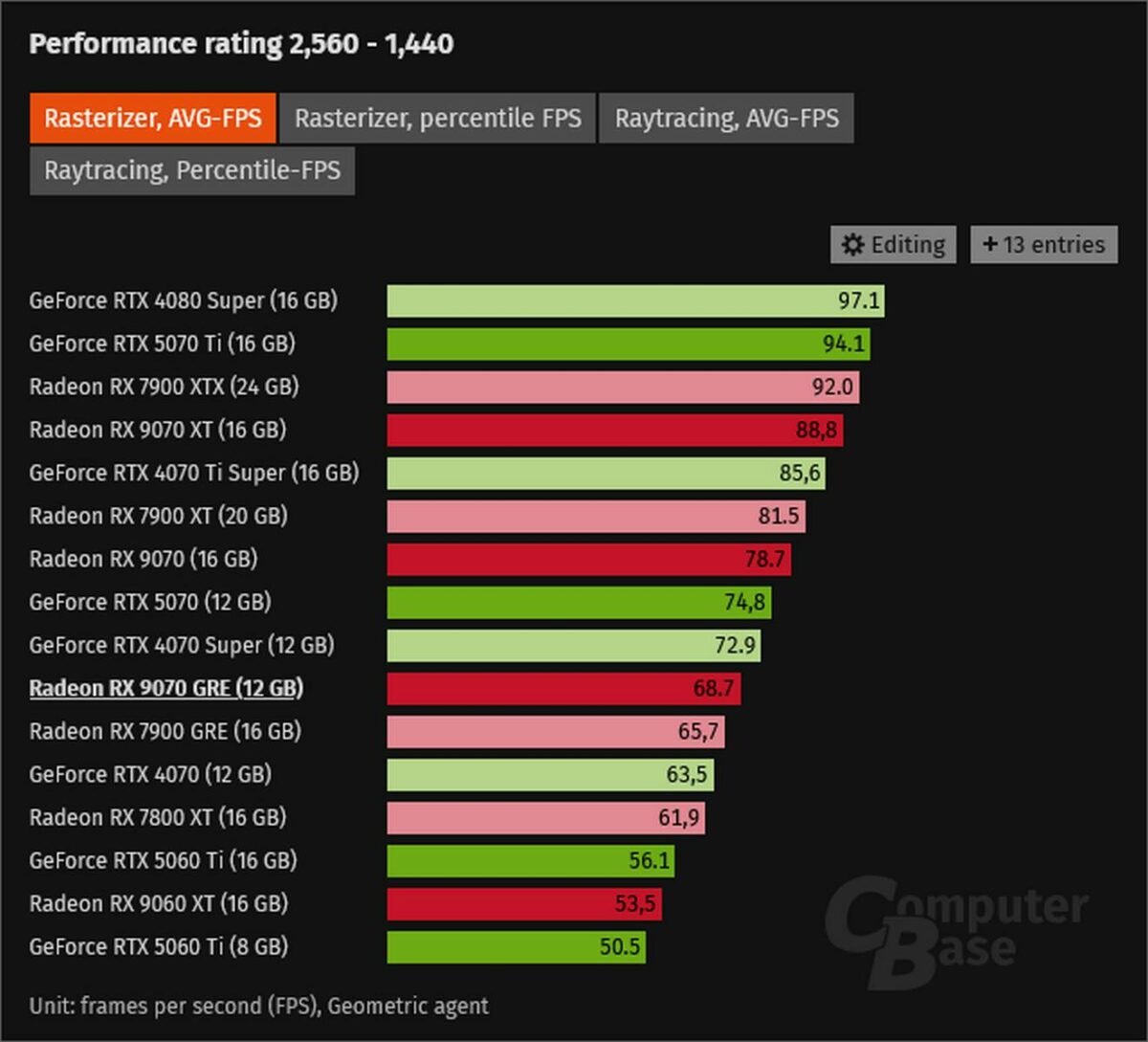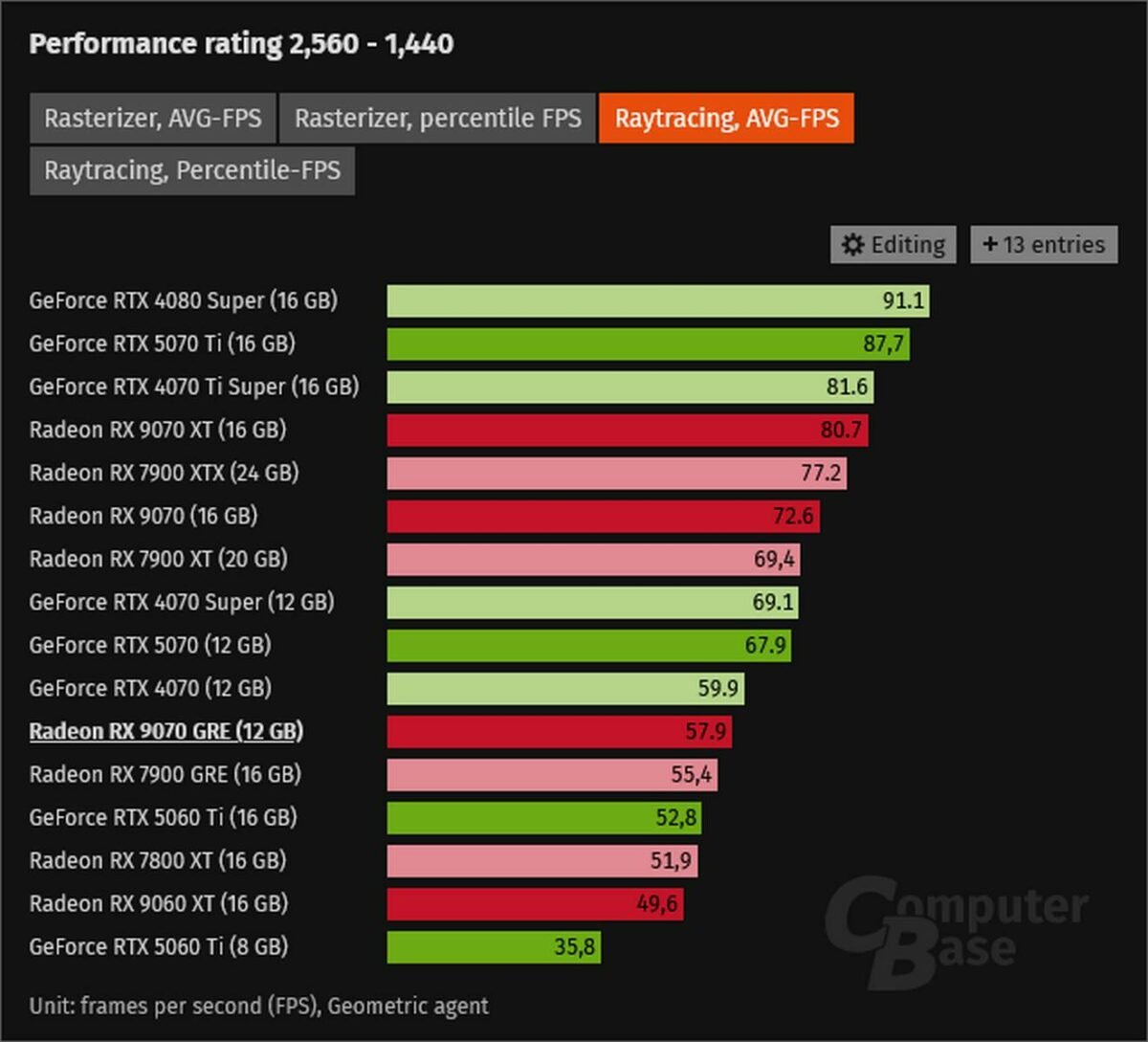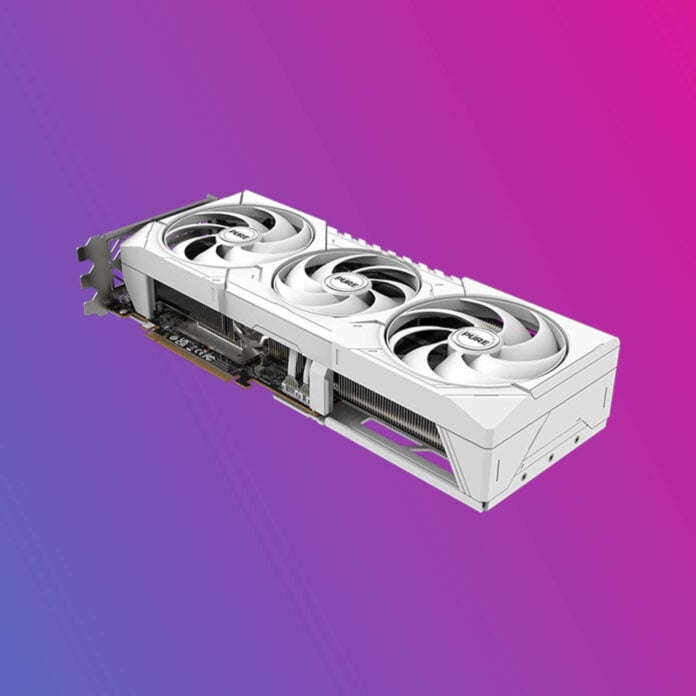Despite launching several months ago, we only now have our first Radeon RX 9070 GRE review to pour over. The graphics card remains exclusive to China for the moment but there is potential for a worldwide release á la other GRE GPUs. I’m personally hoping AMD does launch the graphics card elsewhere, as it seems to provide good value.
ComputerBase managed to get its hands on a Sapphire Pulse Radeon RX 9070 GRE, wasting no time putting it to the test and giving us a clear image of how the graphics card performs relative to alternatives. According to the outlet’s results, RX 9070 GRE delivers 29% more fps than RX 9060 XT 16GB on average in rasterised 1440p gaming, while remaining 14% behind RX 9070.
Switching to ray traced games at the same resolution sees RX 9070 GRE struggle a little more under the increased rendering weight. The card’s lead ahead of RX 9060 XT 16GB shrinks to 17%, while RX 9070 charges ahead with a 25% advantage. ComputerBase believes VRAM is the reason behind this discrepancy, as the two comparison points boast 16GB of memory while China-exclusive only has 12GB.


This VRAM theory seems all the more likely taking 4K performance into account. RX 9070 GRE actually falls behind its predecessor, RX 7900 GRE, in this case. Even RX 7800 XT, again with a 16GB buffer, pulls ahead in memory-intensive games like Indiana Jones and the Great Circle.
Overall, I’m impressed with how RX 9070 GRE handles itself at QHD, providing an interesting midpoint between AMD’s $349 and $549 offerings. 12GB of VRAM is certainly better than 8GB but can still require some tinkering to avoid the pitfall of memory leaks.
As a reminder, RX 9070 GRE sports the same Navi 44 GPU as RX 9070 and RX 9070 XT albeit with cutbacks to core counts and memory bandwidth. It seems to me that the ideal configuration for this variant would be a 16GB buffer, complete with a 192-bit bus. This would circumvent any issues of prior generation cards with more VRAM pushing past it when rendering gets tougher.


